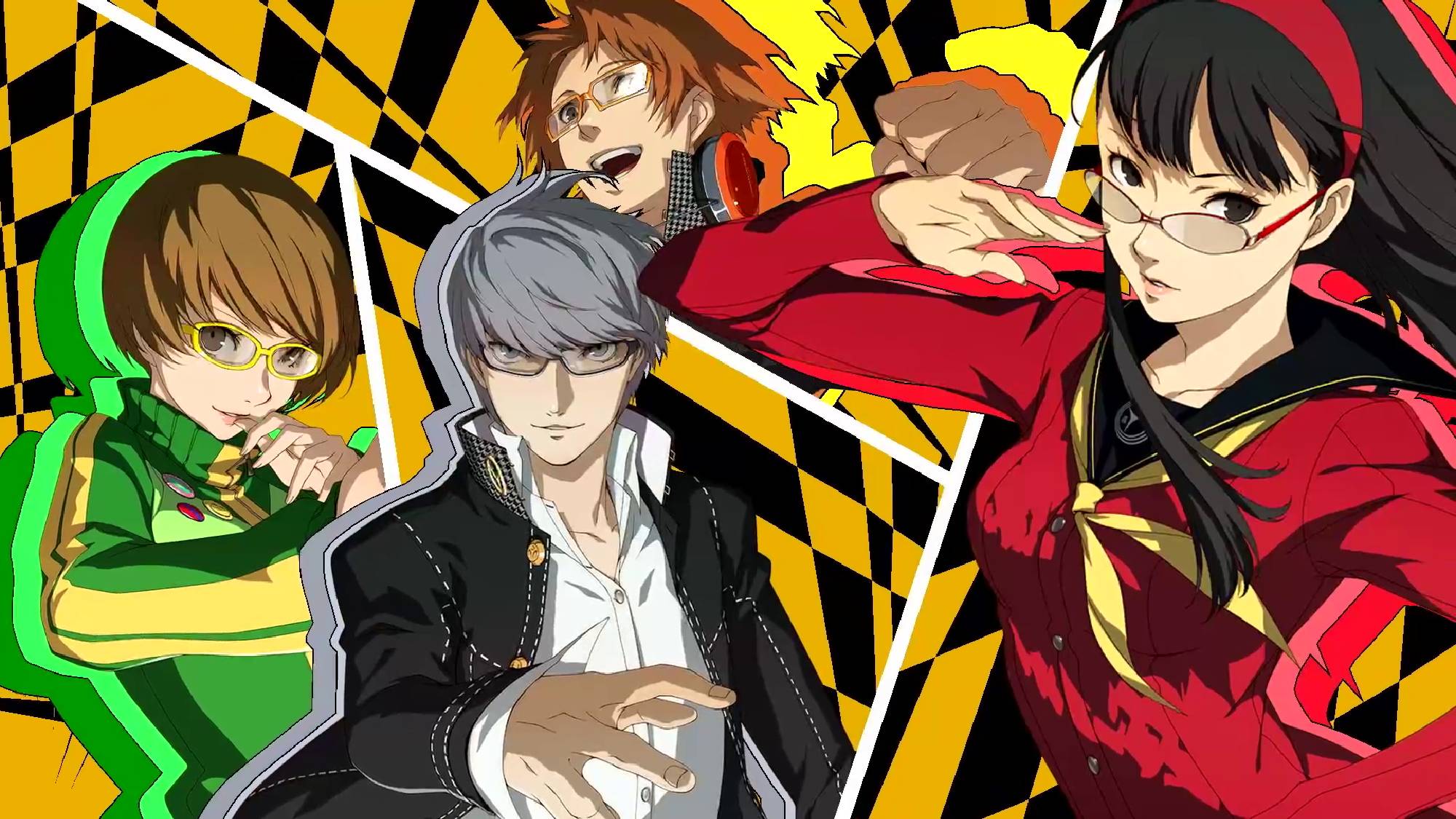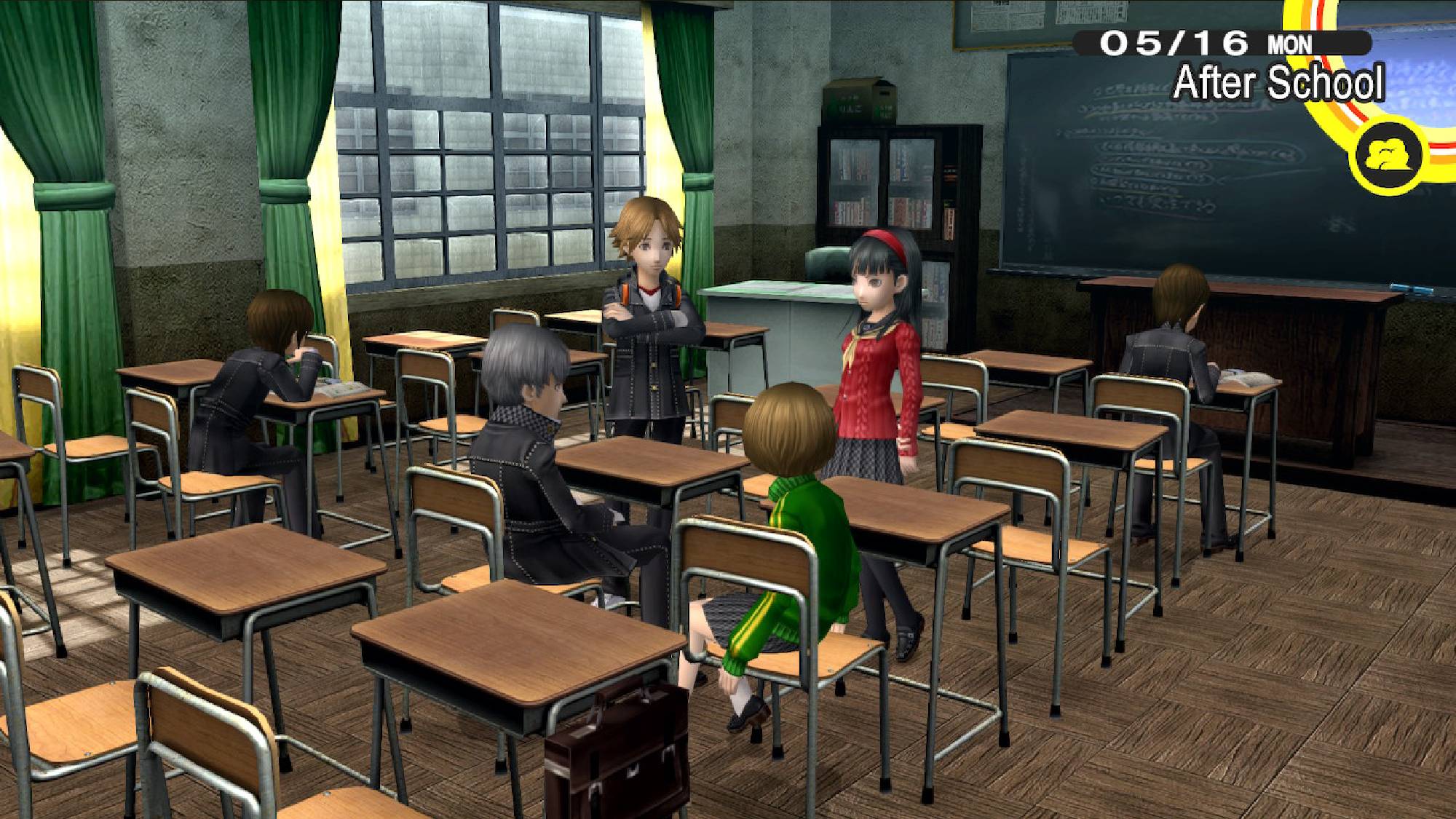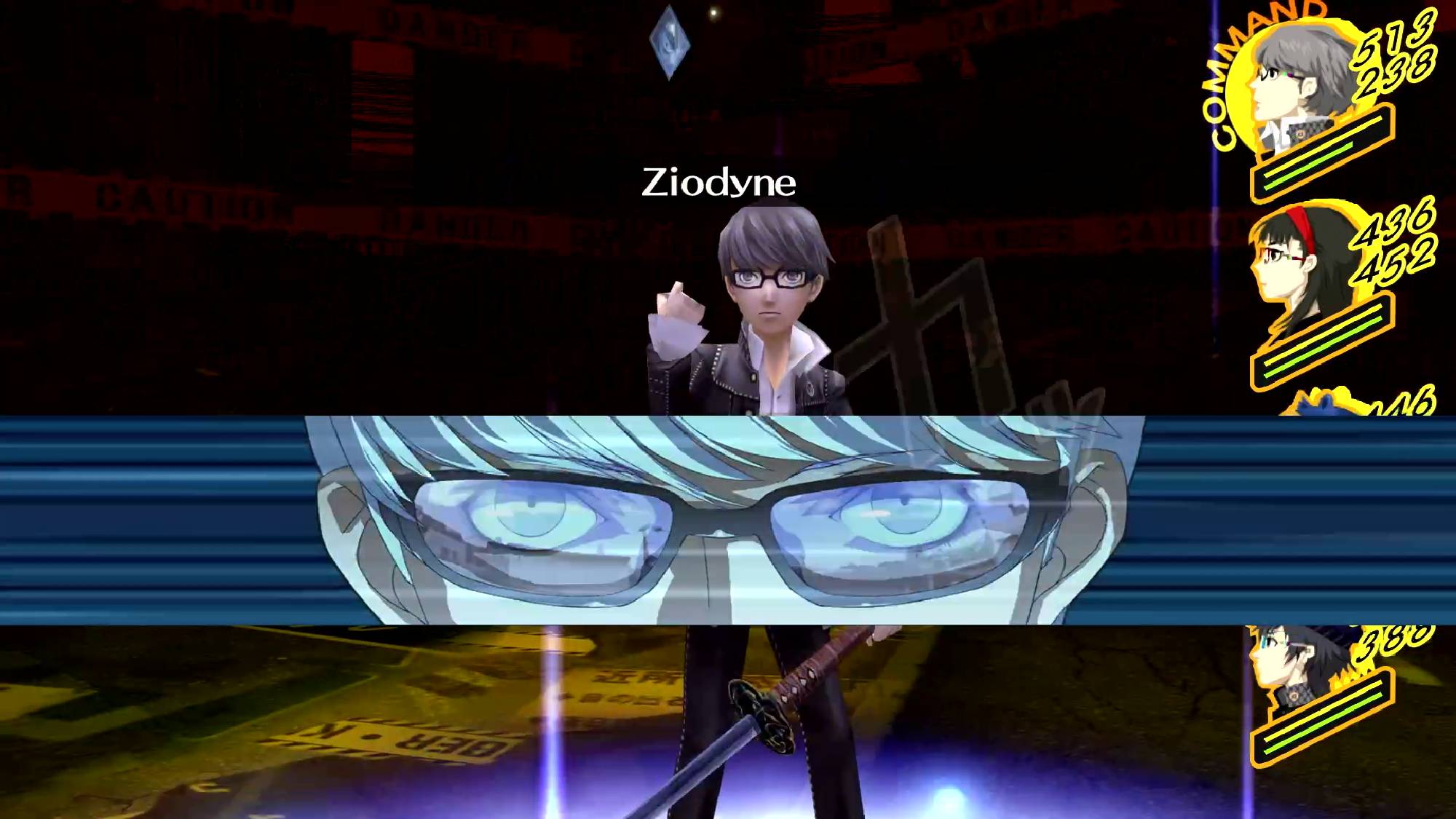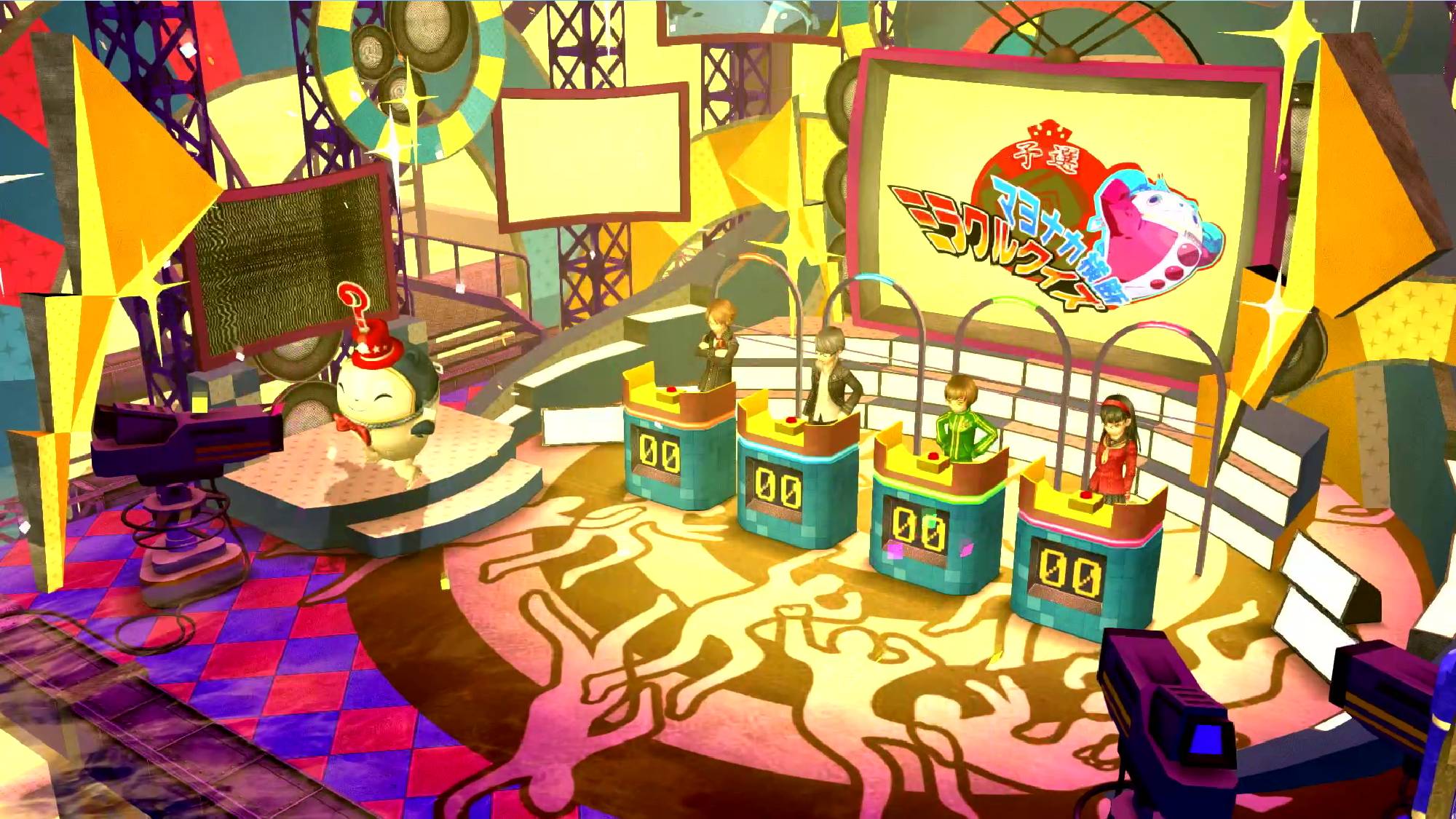Persona 4 Golden on Nintendo Switch is the first essential game of 2023

Welcome! This column is part of a series in which members of the Tom's Guide staff share what they're playing and enjoying right now, with the goal of helping you find great games that you may have missed. Be sure to check out our previous entry, where we talk about the Humongous Classic Collection.
It’s taken a surprisingly long time for Persona 4 Golden to reach modern hardware. Originally released for the PlayStation Vita handheld system in 2012, it was stranded on PlayStation’s portable console for almost a decade until an out-of-the-blue PC release in 2020. This has been duly followed by a release on Nintendo Switch, PS4 and Xbox consoles this month.
In the time between Persona 4 Golden’s original Vita release and now, the Persona franchise has significantly grown in popularity due to the launch of Persona 5 in 2016 (and its expanded edition Persona 5 Royal in 2020). So while this may be an unglamorous port of a game that is now 11 years old it’s still been met with a substantial amount of anticipation.
After more than 50 hours of play over the past few weeks, I’m pleased to report that the hype is (mostly) warranted. Persona 4 Golden remains an absorbing RPG that will steal dozens of hours of your time. It makes a strong case for a spot on any ranking of the best Nintendo Switch games. But it’s not been immune to the passage of time — and some elements of the game haven’t aged especially gracefully.
A year in the life

If you’ve already played Persona 5, the basic setup of Persona 4 Golden will be very familiar to you. But for the unaware, the game casts you as a teenage boy who moves to the fictional rural town of Inaba, Japan to live with his uncle for an entire year while his parents are working abroad.
As you’re trying to settle into your new surrounding the town is rocked by a string of grisly murders, and the police quickly deduce there’s a serial killer on the loose. Coincidentally, at the same time, you discover you have the ability to enter a strange shadow world via a department store TV. Soon it falls on you to unmask the killer using these new paranormal powers - with a little help from an eclectic cast of high-school friends.
The central hook is that Persona 4 Golden is structured around a constantly moving calendar. Each day you’ll have specific blocks of time to fill (usually after-school and evening) and how you spend your days is up to you. You could study at the library, go fishing, take on a part-time job or read a book (all of which boosts your character stats!).

You can also choose to hang out with your classmates and the residents of Inaba, which will develop your Social Links. These links both deepen your combat ability (more on that later) and help you learn more about the people around you. And as with Persona 5, they are the clear highlight of the game as each character has their own personal struggles and challenges.
Get instant access to breaking news, the hottest reviews, great deals and helpful tips.
As a social sim, Persona 4 Golden offers an almost unrivaled sense of escapism. You’ll quickly feel like a real part of the Inaba community, and the core characters will worm their way into your heart in no time. There’s also something inherently novel about a video game that manages to make studying on rainy days or working a low-paying job fun!
Dungeon crawling for days
But Persona 4 Golden is more than just a social sim. It blends slice-of-life simulation with a full-featured RPG dungeon-crawler. At specific points in the story, you’ll need to venture into a distorted television world to rescue important characters or hunt down suspects in the murder case, and it’s here that the other half of Persona 4 Golden comes into play.

These sections revolve around flashy turn-based combat and also incorporate the titular Persona system. Personas are otherworldly creatures that you can obtain and then unleash in battle. Growing your collection is addictive, and the ability to fuse Personas together to create even stronger creatures is essential if you want to survive some of the game’s toughest battles — and some of the later bosses can be pretty darn tough.
I’ll admit that turn-based combat doesn’t always gel with me — I often find it tedious unless it's presented in short bursts — and around the halfway mark, Persona 4 Golden’s combat encounters became an annoying roadblock to the enjoyable story and character relationship. This wasn't helped by the dungeons all being procedurally generated, which gives them a somewhat generic quality.

At least, the social sim and dungeon-crawling elements are expertly blended together. Practically everything you do in your day-to-day life makes either your character or your party stronger. This makes spending time with friends doubly rewarding as you not only better understand their character but you’re also highly likely to unlock a new combat ability or Persona skill for them.
Perfect for portable play
It probably won’t come as a surprise when I tell you that Persona 4 Golden is ideally suited for portable play. It did launch on the PS Vita after all. But it should be noted, the base Persona 4 was a PS2 game, and Golden is an enhanced port of the 2008 original.
You can now play Persona 4 Golden on PC, PlayStation or Xbox but I urge you to opt for Nintendo Switch if possible. I was fortunate enough to get an early copy, which allowed me to take the game with me on my holiday travels. And being able to dip into the game in between family meals and copious outings to the pub felt like the ideal way to play.

Because of the game’s calendar structure, it was super easy to boot up my Switch for even just 15 minutes, play through an in-game day or two, and then carry on with my day. Even after these micro sessions, I’d still come away feeling like I’d made some form of progression whether that was further ranking up a social link or grinding out a couple of character levels by returning to a dungeon I’d already beat.
But don’t mistakenly believe that this means Persona 4 Golden can't be engaging across a longer period of play. Once I returned home after the holidays, I settled into a pleasing groove of playing several hours a night — and as I sped towards the climax it was hard to stop such was my desire to see the final twists in the story.
Persona 4 Golden is showing its age
As noted above, the original Persona 4 was a PS2 title, and even the gussied-up Golden edition was launched on a handheld system that would be considered underpowered by today's standards. So it's not surprising that from a visual perspective, Persona 4 Golden is a pretty mixed bag.

The cartoon style of the world retain some charm, the anime portraits that appear on the screen when a character is talking still look excellent (as do the handful of cutscenes), but the 3D character models that populate the world are ugly. And even worse their lack of expression makes some emotional moments unintentionally comedic. Animations on the whole are extremely stiff and the character eerily resemble plastic dolls more than people.
Persona 4 Golden also has a lot less flair and panache than Persona 5. From the UI and menus to combat sequences everything is a little more rudimentary and flat. Of course, it’s a tad unfair to compare Persona 4 to its direct successor. You would naturally expect its follow up to have made improvements. But you should be aware that this is very much a port of the Vita original with only a resolution bump and some additional difficulty options added to modernize the experience.

Speaking of modernization, it would be remiss of me not to address the fact that Persona 4 Golden has also aged poorly in its handling of homosexuality and gender identity. Sensitive topics such as these are often played for laughs, and there are several dialogue exchanges that feel extremely misogynistic. The game’s female characters are regularly treated as objects for the male ones to ogle. In fact, one of the core cast makes so many crude sexist comments that I actually came to strongly dislike them by the end of the game.
It would be easy to excuse these problems as Persona 4 Golden being a product of its time but these aspects of the game were not acceptable in 2008, and they most certainly are not in 2023. Whether or not these moments are enough to ruin the entire experience will depend on each individual player, but they undoubtedly leave an uncomfortable black mark on the game.
Still a must-play in 2023
Even though the passage of time hasn’t done Persona 4 Golden any favors, it remains more than worth your time. If, like me, you were introduced to the Persona series via Persona 5's Phantom Thieves you will absolutely want to spend some time with Persona 4's Investigation Team. Their adventures are equally charming, endearing and goofy.
Persona 4 Golden is a special game, and it's resurfaced at the perfect time. The weather may be cold and the evenings feel endless, but I found escaping to the quaint town of Inaba on my Nintendo Switch to be a wonderful distraction from the gloom outside. I suppose I’ll need to jump into Persona 3 Portable next!

Rory is a Senior Entertainment Editor at Tom’s Guide based in the UK. He covers a wide range of topics but with a particular focus on gaming and streaming. When he’s not reviewing the latest games, searching for hidden gems on Netflix, or writing hot takes on new gaming hardware, TV shows and movies, he can be found attending music festivals and getting far too emotionally invested in his favorite football team.
